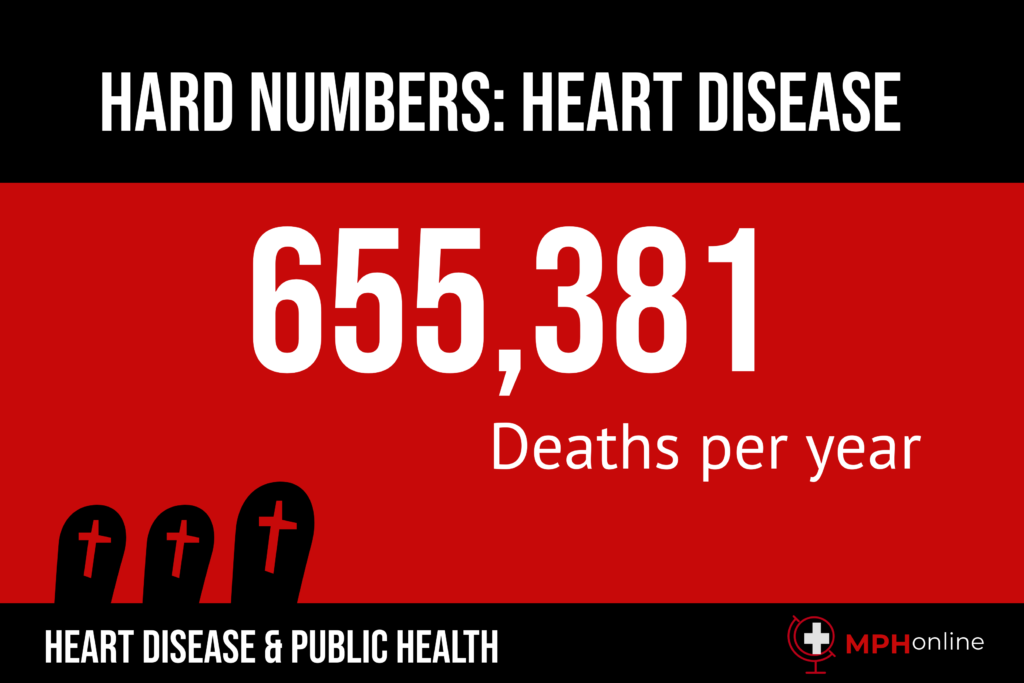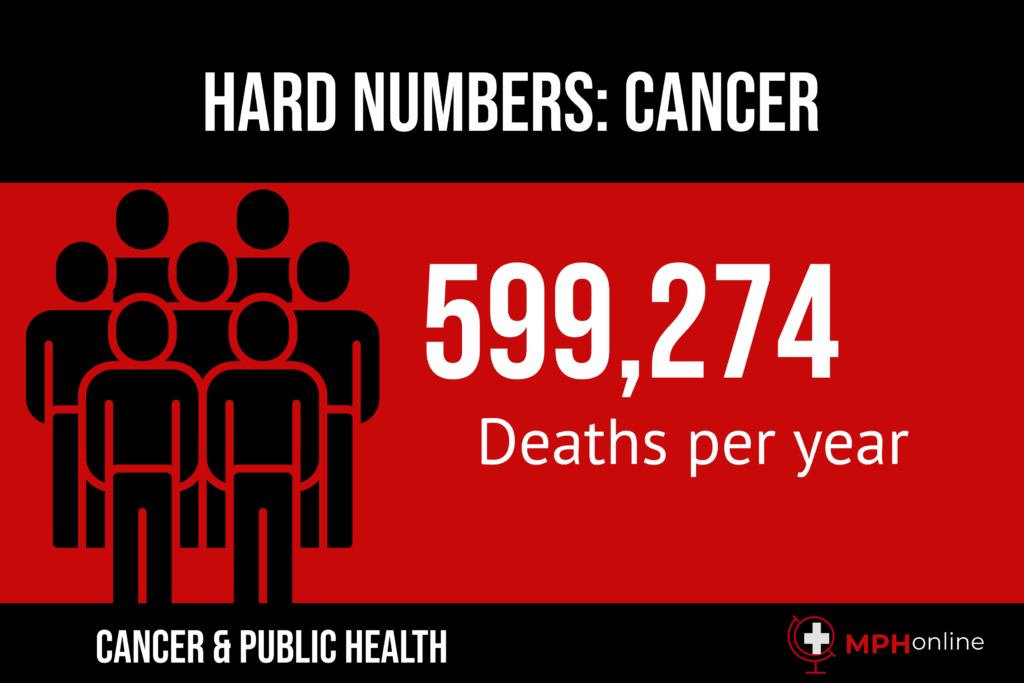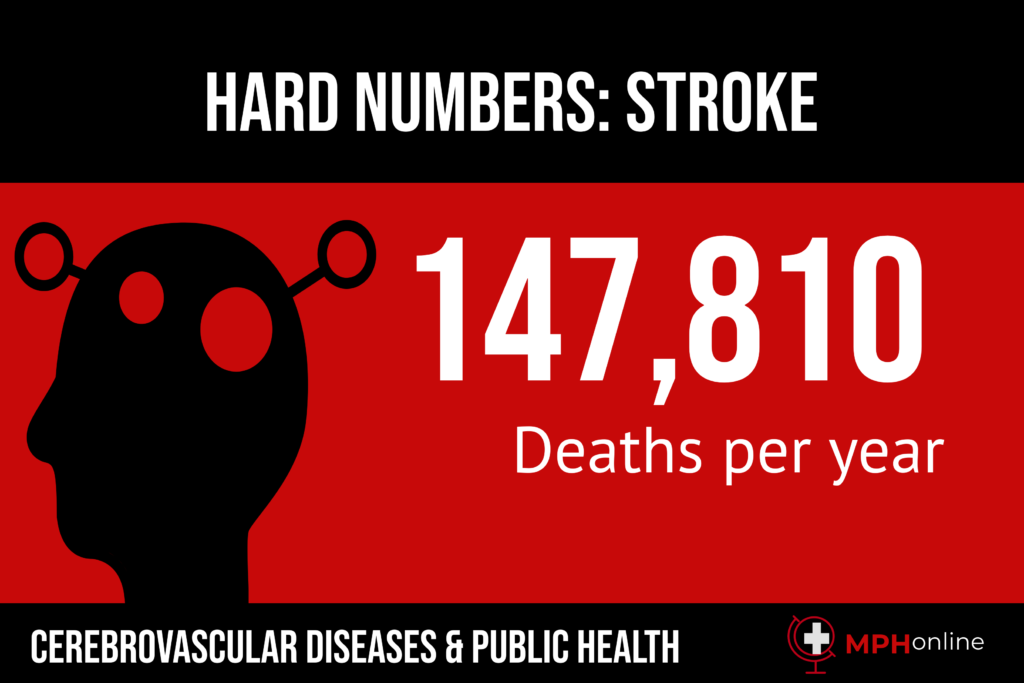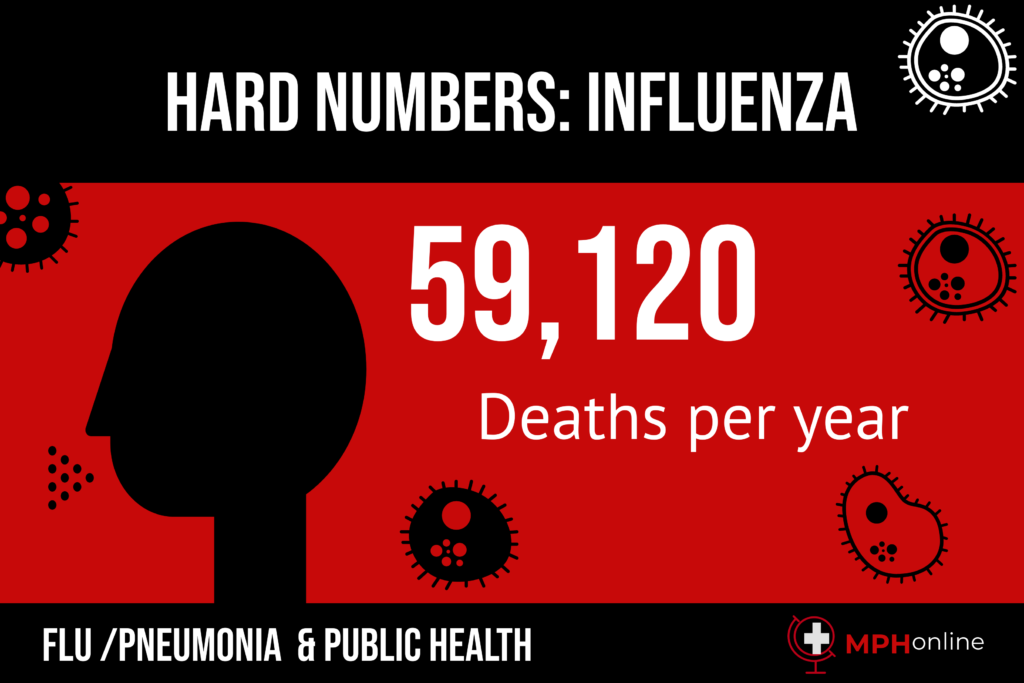No one could have predicted the impact that the COVID-19 pandemic would have on the public health field and job market. Now more than ever, it’s important for public health job seekers to keep an eye on health trends to inform their job search. Whether you’re already living in the United States or you live elsewhere and are considering a move to the U.S., understanding the most common health issues in America can help inform your career choices. Asking, “what is the most serious public health issue today?” can be an important part of deciding how to move forward with your career.
If you’re a prospective public health professional, knowing the most important public health issues in the United States can be an important part of understanding where there’s the greatest need for education and service. Working in direct patient care isn’t the only way to make a positive change when it comes to public health – other industries can play a key role in changing the face of public health as well. Technology that leads to better patient care, public policies that make it easier for U.S. citizens to access preventative care, and working in food services and/or nutrition to help people access foods that support their health can all help to reduce the most pressing public health issues in the United States.
It’s also important to remember that working as a medical doctor isn’t the only option if you do want to provide help to people who are struggling with the most common health issues in the US. Nurses, social workers, counselors, and policymakers, and other professionals all work to improve the health of the public at large.
Here, we’ll take a look at the top ten most common health issues in the United States. Whether you’re just getting started with your job search, debating going into healthcare, or are looking for another way to positively affect the health of Americans, staying on top of trends in public health can help you make smart career moves that can maximize your impact on the health of others over time.

1. Heart Disease – 655,381 deaths per year
Heart disease encompasses many heart conditions, including heart valve disease, heart infection, disease of the heart muscle, congenital heart defects, heart rhythm issues, coronary artery disease, and more. Some heart problems are genetic and cannot be avoided, while others are preventable.
Risk factors for heart problems include age (older people are more likely to suffer from heart disease than younger people), sex (males are more likely to experience heart issues than females), family history, poor diet, smoking, high blood pressure, obesity, stress, physical inactivity, and more. A diagnosis of heart disease is not necessarily a death sentence, but it often means that the person receiving the diagnosis needs to take swift, massive action to change their lifestyle.

2. Cancer – 599,274 deaths per year
Cancer is a word all too familiar to many families across the United States. While many forms of cancer are treatable (especially when caught early), others are not. There are many types of cancer. All types of cancer involve abnormal cells that divide uncontrollably, with the ability to interfere with and invade other tissues of the body.
People who experience symptoms of cancer – including lumps or thickening under the skin, fatigue, skin changes, unexplained bleeding or bruising, among others – need to see a healthcare professional for a diagnosis right away. While it’s scary to hear a diagnosis of cancer, research is promising. Cancer treatments are better than ever before, and many people go on to live long, healthy lives after successfully battling cancer.
3. Chronic Lower Respiratory Diseases – 159,486 deaths per year
Chronic lower respiratory diseases include several conditions, such as chronic obstructive pulmonary disease (COPD) including emphysema and chronic bronchitis. Asthma, occupational lung diseases, and pulmonary hypertension, also fall under the umbrella of chronic lower respiratory diseases. These chronic conditions make it difficult to breathe. Many people who have chronic lung conditions find that wheezing, mucous production, and coughing are day to day issues. Sometimes, certain environmental issues (like cigarette smoke, allergens, and seasonal changes) can make these issues worse.
Sadly, COPD is often preventable. Many cases are caused by exposure to cigarette smoke or other irritants for long periods. Lung diseases may get worse over time (COPD, for example, is a progressive disease). People who suffer from chronic lower respiratory diseases need to carefully follow their doctor’s instructions regarding lifestyle changes and medication.

4. Stroke (Cerebrovascular Diseases) – 147,810 deaths per year
A stroke happens when the blood supply to the brain is cut off or reduced, depriving the brain’s delicate tissue of oxygen and nutrients. In as little as a few minutes without oxygen, brain cells can begin to die, leading to long-term brain damage. Immediate medical treatment is essential for someone suffering from a stroke.
While symptoms of a stroke can vary from person to person, they often include struggling to understand what others are saying, problems with speech, paralysis/numbness of the arms/face/legs (often only affects one side of the body), a headache, trouble walking, and/or trouble seeing out of one or both eyes. If you think that you or someone around you is suffering from a stroke, you must call 911 immediately to get treatment.
5. Alzheimer’s Disease – 122,019 deaths per year
Alzheimer’s disease is a progressive neurological disorder that causes brain cells to shrink and die. 80% of people who have Alzheimer’s disease are age 75 or older. Symptoms of Alzheimer’s disease may include memory loss, difficulty with reasoning, difficulty making decisions, as well as personality changes (including depression), social withdrawal, loss of inhibition, mood swings, and more. While Alzheimer’s disease gets worse over time, there are steps that family members and other caretakers can take to help someone suffering from the disease life as comfortable a life as possible.
6. Diabetes – 84,946 deaths per year
Diabetes affects some people from the day they’re born (type 1), while others develop diabetes later in life (type 2). Sometimes type 2 diabetes appears out of nowhere, while other times it can be connected to lifestyle factors, such as weight gain. Diabetes affects the way the body uses glucose (sugar). Long-term complications of diabetes can develop slowly over time. The longer a person is diabetic, the more likely they are to suffer long-term health consequences. Complications include kidney disease, nerve damage, eye damage, cardiovascular disease, skin conditions, depression, and more.
7. Substance Abuse/Overdose – 67,367 deaths per year
Substance use disorder can be hard for people who have never suffered from addiction to understand. Many people wonder why someone who is addicted to drugs and/or alcohol can’t just quit. Unfortunately, it’s not that simple. Substance use disorder (the medical umbrella term from drug and alcohol abuse/addiction) is caused by complex genetic and environmental factors. Recovery from substance use disorder is possible, and getting well often requires professional treatment, social support, and an ongoing commitment to actively participating in the recovery process.

8. Influenza and Pneumonia – 59,120 deaths per year
Influenza and pneumonia are common conditions that can quickly turn dangerous. Influenza (commonly known as the flu) is a viral infection of the respiratory system. For many people, the flu goes away on its own after a few days. People who are very young or very old, or suffer from other health conditions, may be at risk for complications from the flu.
Some of the viruses that cause the flu can also cause pneumonia. It’s also possible to get pneumonia without having the flu. Pneumonia also affects the upper respiratory system, however, it attacks the air sacs of the lungs specifically. While many people recover from pneumonia, the condition can become life-threatening. Infants and young children, people older than age 65, and people who have weakened immune systems are more likely to experience severe/ life-threatening pneumonia.
9. Nephritis, Nephrotic Syndrome, and Nephrosis – 51,386 deaths per year
Nephritis, nephrotic syndrome, and nephrosis are types of kidney disease. People who suffer from kidney disease struggle to filter waste out of the body properly. These conditions can cause weight gain, swelling, loss of appetite, fatigue, and other symptoms. Nephrotic syndrome is treatable with medications and lifestyle changes. Diabetes and high blood pressure increase the risk of developing kidney disease. People who are diagnosed with kidney disease need to adhere strictly to their doctor’s treatment protocol to avoid progressing into kidney failure.
10. Intentional Self-Harm (Suicide) – 48,344 deaths per year
Death by self-harm, or suicide, is sadly an all-too-common issue in the United States. Some people have suicidal thoughts when faced with a life situation that feels insurmountable. If you or someone you know feels suicidal, it’s important to reach out for help as soon as possible. Recovery from suicidal thoughts is possible. People who experience a tragic life event, suffer from substance use disorder, feel isolated, or have a family history of suicide or suicidal thoughts may be more likely to die due to intentional self-harm.
Related: